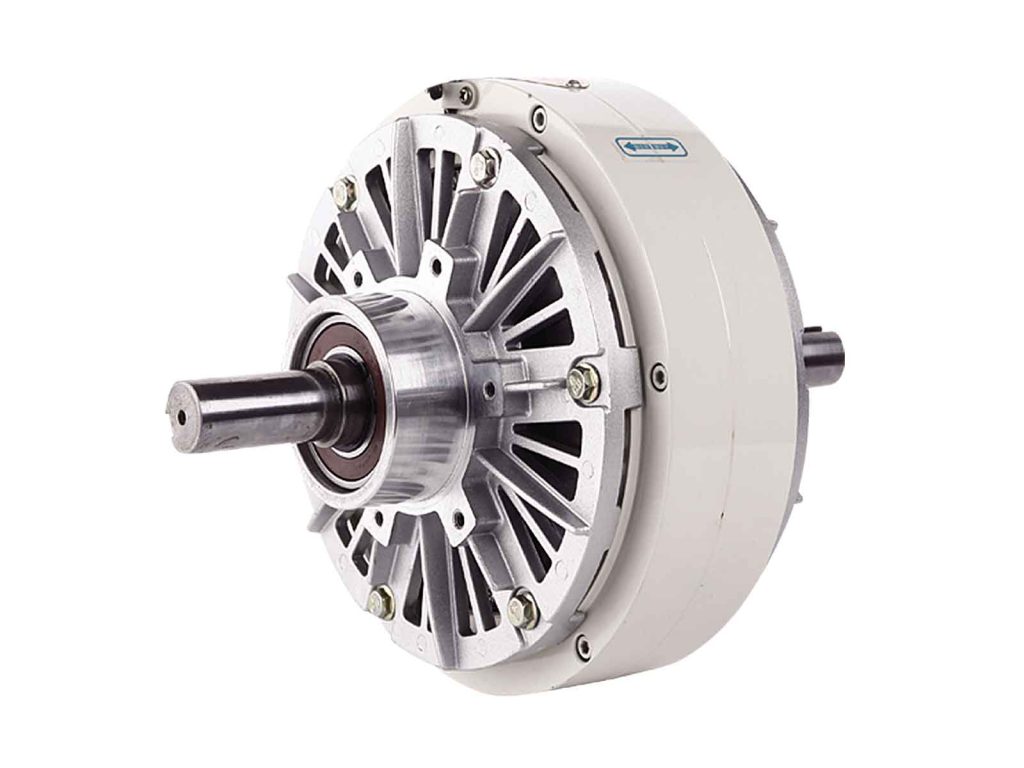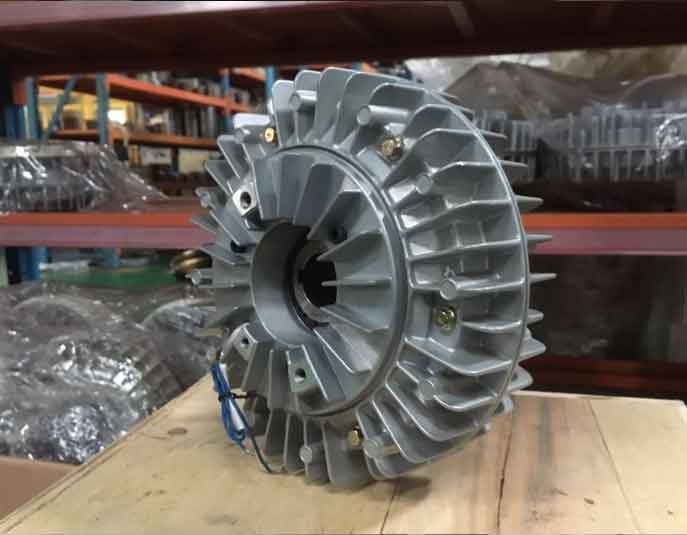Magnetic particle brakes are a fascinating technology used in various industries for controlling rotational speed and torque. Magnetic particle brakes find applications in fields such as manufacturing, automotive, and machinery, playing a crucial role in maintaining precise control over machinery.
Magnetic particle brakes operate on the principle of magnetorheology, a phenomenon in which the viscosity of a fluid can be controlled by the application of a magnetic field. These brakes consist of two main components: a rotor and a stator. The rotor is connected to the input shaft, while the stator is connected to the output shaft. Between the rotor and stator, there is a magnetic field created by an electromagnetic coil.
When the coil is energized, it generates a magnetic field that permeates the space between the rotor and stator. This magnetic field causes the magnetic particles suspended in a special fluid (typically a mixture of oil and iron particles) within the brake to align along the field lines. As these particles align, they create a viscous connection between the rotor and stator, transmitting torque. The strength of the magnetic field determines the level of engagement, allowing for precise control over the braking force.
Top 4 Advantages of Magnetic Particle Brakes
- Precise Control : One of the most significant advantages of magnetic particle brakes is their ability to provide highly precise control over rotational speed and torque. By adjusting the strength of the magnetic field, operators can easily fine-tune the braking force to match specific requirements.
- Silent Operation : Magnetic particle brakes operate silently, making them ideal for applications where noise is a concern. This characteristic is particularly valuable in the printing and packaging industries, where quiet operation is essential.
- Long Service Life : These brakes have a long service life when properly maintained. Since there is no mechanical contact between the rotor and stator, wear and tear are minimized. This longevity reduces maintenance costs and downtime.
- Rapid Response : Magnetic particle brakes offer rapid response times, which is crucial in applications where immediate adjustments in torque or speed are required. This makes them suitable for industries like robotics and automation.
Top 3 Disadvantages of Magnetic Particle Brakes
- Limited Torque Range : One of the primary disadvantages of magnetic particle brakes is their limited torque range. They are not suitable for high-torque applications, as the maximum torque they can transmit is relatively low compared to other braking systems.
- Heat Generation : During operation, magnetic particle brakes generate heat due to the friction within the viscous fluid. In high-frequency applications or extended use, this heat can become a concern, potentially leading to overheating.
- Efficiency : Magnetic particle brakes are not as energy-efficient as other brake types. Some energy is lost in the form of heat due to the friction in the brake. This inefficiency may not be ideal for applications that prioritize energy conservation.
| Characteristic | Description |
|---|---|
| Torque Range | Low to Medium |
| Control Precision | High |
| Noise Level | Low |
| Heat Generation | Moderate |
| Service Life | Long |
| Efficiency | Moderate |

Applications of Magnetic particle brakes in various industries
1. Printing and Packaging
In the printing and packaging industry, precise control over tension and speed is critical. Magnetic particle brakes help maintain the desired tension in the web material, ensuring high-quality printing and packaging.
2. Automotive
These brakes are used in automotive dynamometers and chassis dynamometers, where they play a crucial role in testing and measuring vehicle performance.
3. Robotics and Automation
In robotics and automation, where precise motion control is vital, magnetic particle brakes are used to adjust and control the motion of robotic arms and other machinery.
Conclusion
In conclusion, magnetic particle brakes are a unique and valuable technology, offering precise control, silent operation, and long service life. While they are not suitable for high-torque applications and can generate some heat and are not the most energy-efficient option, their advantages make them a popular choice in various industries.
By understanding the advantages and disadvantages of magnetic particle brakes, engineers and operators can make informed decisions when selecting braking solutions for their specific applications. These brakes continue to play a crucial role in maintaining the efficiency and precision of various industrial processes.
